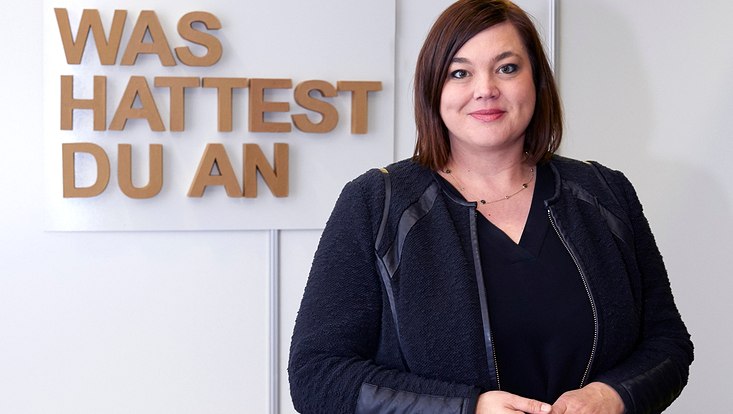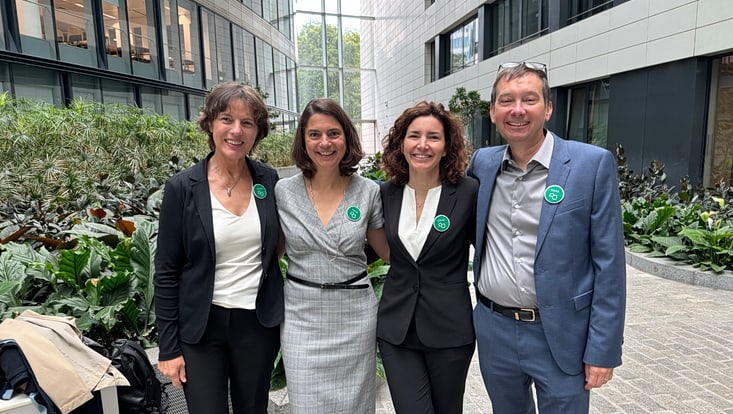Imaging of Matter
Retrospect: Exhibition and accompanying program on sexualized violence"We have to stay on it permanently"
22 March 2023

Photo: UHH/CUI, Peter Garten
It is a topic that stirs things up: For three weeks, the Cluster of Excellence "CUI: Advanced Imaging of Matter" at Universität Hamburg presented the exhibition "What were you wearing?" on the Bahrenfeld campus, flanked by various workshops on the topic, which the Cluster organized together with partners.
A research campus is not necessarily the place where one would expect to find an exhibition on sexualized violence. But the feedback from the approximately 1500 visitors clearly showed how important it is to give space to the topic of sexualized violence. Many of them made use of the feedback cards that were handed out and also appreciated the commitment in the research environment.
The board of the Cluster of Excellence had already decided two years ago to specifically address the topic of sexualized violence and abuse - the discussions that the Month of Action has now triggered in some working groups, including those of the partner organizations, clearly shows how right it was to do so.
Bring the topic out of the taboo zone
Katharina Fegebank, Second Mayor of the Free and Hanseatic City of Hamburg and Senator for Science, Research, Equality and Districts, emphasized at the opening how important it is to illuminate the field brightly. Every exhibition, every podcast helps to bring the topic out of the taboo zone.
Taboos still abound. The themed workshops were very well received overall, especially the self-defense courses, for example, says CUI diversity manager Eileen Schwanold. Less well attended were the courses that presuppose a current, pre-existing concern. This must first be admitted, and many do not even know where so-called microaggressions begin, which also exist in the university environment. Schwanold: "There is a blind spot here."
Planning more initiatives
Exhibition organizer Emely Unger is herself affected; the garment she was wearing at the time of an assault and her story are presented in the exhibition. In addition, 12 women shared their experiences of sexualized violence and their reactions to it in intensive conversations. The garments and the accounts are complemented by facts and figures that depict a wide variety of perspectives, including, for example, the situation of people with disabilities. There is evidence from research, for example, that socially disadvantaged groups are disproportionately affected by assault. For a police officer who visited the exhibition with her platoon, it is the mixture of emotionality, factual information and concrete assistance that makes the exhibition so valuable.
"The university and academia must take a clear and consistent stand against all forms of sexualized discrimination and violence," said MIN Faculty Dean Norbert Ritter at the opening. "We need to get the false victim blaming out of people's minds. We have to stay on it permanently." That's the plan for the cluster: CUI Administrative Managing Director Anika Ostermaier-Grabow, whose initiative brought the exhibit to campus, and Eileen Schwanold are already planning more initiatives.


